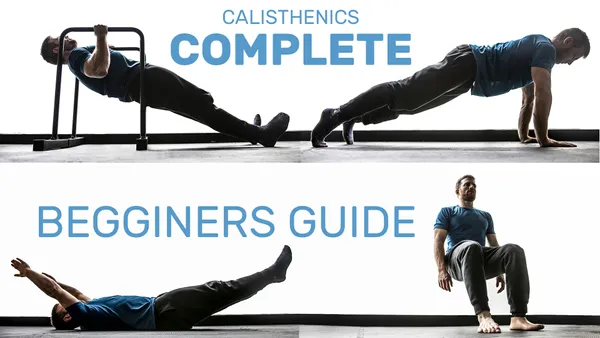Table of Contents
Calisthenics is a popular form of exercise that uses bodyweight movements to improve strength, flexibility, and endurance. It is often claimed that calisthenics is not as effective as traditional strength training methods, such as lifting weights. However, there is growing evidence to suggest that calisthenics can be just as effective, if not more so, than weightlifting for building strength. In this article, we will explore the benefits of calisthenics for strength training and provide some tips on how to get started. If you are looking for a challenging and effective way to build strength, calisthenics is definitely worth considering.
Is Calisthenics Strength Training? The Ultimate Guide to Bodyweight Workouts
Benefit | Description |
|---|---|
Improved strength | Calisthenics exercises can help you build muscle and strength. |
Increased flexibility | Calisthenics exercises can help you improve your flexibility. |
Improved cardiovascular health | Calisthenics exercises can help you improve your cardiovascular health. |
Reduced risk of injury | Calisthenics exercises can help you reduce your risk of injury. |
Improved balance and coordination | Calisthenics exercises can help you improve your balance and coordination. |
I. Calisthenics: A Comprehensive Guide to Strength Training
What is Calisthenics?
Calisthenics is a form of strength training that uses bodyweight exercises to build muscle and strength. Calisthenics exercises can be done anywhere, with no equipment required, making them a great option for people who want to get fit without having to go to the gym.
Benefits of Calisthenics
Calisthenics offers a number of benefits, including:
- Improved strength
- Increased flexibility
- Improved cardiovascular health
- Reduced risk of injury
- Improved balance and coordination
Calisthenics Exercises
There are a wide variety of calisthenics exercises that can be used to build strength. Some of the most popular exercises include:
- Push-ups
- Pull-ups
- Squats
- Lunges
- Planks
Calisthenics Training Programs
There are a number of different calisthenics training programs that can be used to build strength. Some of the most popular programs include:
- The Bodyweight Training Pyramid
- The Convict Conditioning Program
- The Ross Enamait Bodyweight Training Program
Related Posts
- How to Do a Muscle-Up
- The Best Calisthenics Gifts and Accessories
- The Best Calisthenics Quotes and Motivation
Conclusion
Calisthenics is a great way to build strength, improve flexibility, and get in shape. With no equipment required, calisthenics is a great option for people of all ages and fitness levels.
Benefit | Description |
|---|---|
Improved strength | Calisthenics exercises can help you build muscle and strength. |
Increased flexibility | Calisthenics exercises can help you improve your flexibility. |
Improved cardiovascular health | Calisthenics exercises can help you improve your cardiovascular health. |
Reduced risk of injury | Calisthenics exercises can help you reduce your risk of injury. |
Improved balance and coordination | Calisthenics exercises can help you improve your balance and coordination. |
Related Posts
- How to Get Started with Calisthenics as a Beginner
- The Best Calisthenics Supplements and Nutrition
- How to Do a Squat
Calisthenics: A Comprehensive Guide to Strength Training
II. Benefits of Calisthenics for Strength Development
Improved Strength
Calisthenics exercises can help you build muscle and strength. They work multiple muscle groups at once, and can be modified to suit your fitness level. You start with basic exercises like squats, push-ups, and pull-ups then progress to more advanced exercises like muscle-ups and handstands.Check out more about to how to build muscle and strength with calisthenics here
- Increased Flexibility
- Improved Cardiovascular Health
- Reduced Risk of Injury
- Improved Balance and Coordination
Increased Flexibility
Calisthenics exercises can help you improve your flexibility. They involve a lot of dynamic movement, which can help to loosen up your muscles and joints. This can improve your overall range of motion and reduce your risk of injury.Check out more about and flexibility with calisthenics here
Type | Description |
|---|---|
Concentric | Muscles contracting while shortening. |
Isometric | Muscles contracting without changing length. |
Eccentric | Muscles lengthening while contracting. |
Benefits of Calisthenics for Strength Development
III. Calisthenics Exercises for Building Strength
Compound Exercises
Calisthenics exercises that work for multiple muscle groups simultaneously are known as compound exercises. These exercises are highly effective for building strength and muscle mass. Some examples of compound calisthenics exercises include:
Isolation Exercises
Isolation exercises, on the other hand, target specific muscle groups. While they are not as effective for building overall strength as compound exercises, they can be useful for developing specific muscle groups or for rehabilitating injuries. Some examples of isolation calisthenics exercises include:
Exercise | Muscles Worked |
|---|---|
Squats | Legs, glutes, core |
Push-ups | Chest, triceps, shoulders |
Pull-ups | Back, biceps, forearms |
Dips | Chest, triceps, shoulders |
Muscle-ups | Back, biceps, forearms, chest, triceps, shoulders |
Calisthenics Exercises for Building Strength
IV. Calisthenics Training Programs for Strength Gains
To maximize strength gains through calisthenics, it's crucial to follow a structured training program. Here are some effective approaches:
- Progressive Overload: Gradually increase the difficulty of your exercises by adding weight, reps, or sets over time. This challenges your muscles and stimulates growth.
- Compound Exercises: Focus on exercises that work multiple muscle groups simultaneously, such as squats, push-ups, and pull-ups. These exercises promote overall strength development.
- Frequency and Intensity: Aim for 2-3 calisthenics workouts per week, with each session lasting 30-60 minutes. Maintain a high intensity level during your workouts to maximize muscle activation.
Exercise | Sets | Reps | Rest |
|---|---|---|---|
Squats | 3 | 10-15 | 60 seconds |
Push-ups | 3 | 8-12 | 60 seconds |
Pull-ups | 3 | 6-10 | 90 seconds |
Sample Calisthenics Training Program for Strength Gains:
- Monday: Upper body (push-ups, pull-ups, dips)
- Tuesday: Rest
- Wednesday: Lower body (squats, lunges, calf raises)
- Thursday: Rest
- Friday: Core and flexibility (planks, crunches, stretching)
- Saturday: Rest
- Sunday: Active recovery (light cardio, yoga)
Remember to warm up before each workout and cool down afterward. Listen to your body and rest when needed. With consistency and dedication, you can achieve significant strength gains through calisthenics.
For more information on calisthenics training programs, check out our related posts on How to Design Your Own Calisthenics Routine and Program and The Best Calisthenics Exercises and Variations.